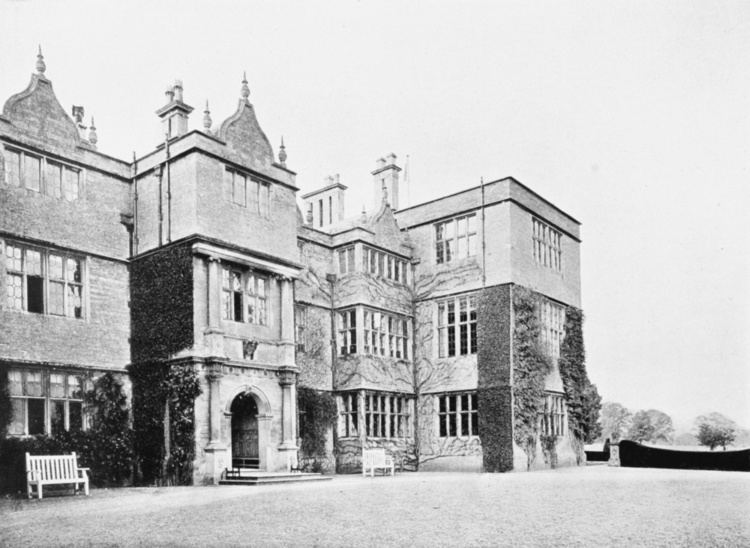Type House Architectural style(s) Elizabethan Designated 3 March 1952 | Built 1597-C1603 Governing body Privately owned | |
 | ||
Location Milton Keynes, Buckinghamshire, England Similar Skilbeck's Warehouse, Park House - Cardiff, Church of St Peter - Carrigrohane, Church of All Saints - Murston, St Michael and All Angels C | ||
Oly070429 gayhurst house
Gayhurst House (now known as Gayhurst Court) is a late-Elizabethan country house in Buckinghamshire, with important contributions by the Victorian architect William Burges. It is located near the village of Gayhurst, several kilometres north of Milton Keynes. The house itself and the adjacent Church of St Peter are Grade I listed buildings and the dovecot and gate piers in the grounds Grade II* listed buildings.
Contents
- Oly070429 gayhurst house
- Map of Gayhurst House Gayhurst Court Gayhurst Newport Pagnell MK16 8LG UK
- Oly070345 gayhurst house
- References
Map of Gayhurst House, Gayhurst Court, Gayhurst, Newport Pagnell MK16 8LG, UK
The house has early sixteenth-century origins, was expanded in 1597 by William Moulsoe and completed by his son, Sir Everard Digby, one of the conspirators involved in the Gunpowder Plot. In spite of the Digby family's disgrace at the time, Sir Everard's widow was able to retain the property. Ironically, both sons – John and Kenelm – became fervent Royalists during the English Civil War in the 1640s. Sir Kenelm, in fact, became a distinguished figure in his own right and his initials can be found to this day on stone pillars in the property's extensive gardens. During the Civil War, parliamentary troops were billeted at Gayhurst and an inscription in the porch showing an 'X' and the date 1649 is said to have been scratched into the stone by a bored roundhead recording the execution of King Charles the First. The estate was subsequently inherited by Sir Kenelm Digby, the courtier, diplomat and natural philosopher. In 1704 the estate was sold to Sir Nathan Wrighte.
It was extensively refurbished, 1858–72, by William Burges for Robert Carrington, 2nd Baron Carrington, and his son. Lord Carrington was Burges' first significant patron. In total, some £20,000 was spent, which did not include the costs of construction for Burges' planned main staircase, which was never built. However, a minor stair, the Caliban Stair, was constructed. The style chosen was Anglo/French Renaissance, which Burges considered in keeping with the date of Moulsoe's rebuilding. Rooms contain some of his most splendid fireplaces, with carving by Burges' long-time collaborator Thomas Nicholls, in particular those in the Drawing Room which include motifs from Paradise Lost and Paradise Regained. Burges's contributions to the house were subsequently undervalued, an undated and anonymous guidebook, probably dating from the late nineteen seventies, described his work thus; "Burges made considerable alterations and additions, mostly of a disastrous nature."
The estate has a fine series of out-buildings including a seventeenth-century dovecote, turreted stables, a brewhouse, bakehouse and dog kennels. Perhaps the most extraordinary addition is the Male Servants' Lavatory, a large circular privy based on the Abbot's kitchen at Glastonbury and surmounted by a, now-eyeless, statue of Cerberus.
The park was laid out by Capability Brown and remodelled by Humphry Repton.
The estate was broken up in the twentieth century and the house was converted into 14 flats between 1971 and 1979.
